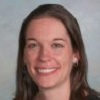2: Europe
- Page ID
- 21059
\( \newcommand{\vecs}[1]{\overset { \scriptstyle \rightharpoonup} {\mathbf{#1}} } \) \( \newcommand{\vecd}[1]{\overset{-\!-\!\rightharpoonup}{\vphantom{a}\smash {#1}}} \)\(\newcommand{\id}{\mathrm{id}}\) \( \newcommand{\Span}{\mathrm{span}}\) \( \newcommand{\kernel}{\mathrm{null}\,}\) \( \newcommand{\range}{\mathrm{range}\,}\) \( \newcommand{\RealPart}{\mathrm{Re}}\) \( \newcommand{\ImaginaryPart}{\mathrm{Im}}\) \( \newcommand{\Argument}{\mathrm{Arg}}\) \( \newcommand{\norm}[1]{\| #1 \|}\) \( \newcommand{\inner}[2]{\langle #1, #2 \rangle}\) \( \newcommand{\Span}{\mathrm{span}}\) \(\newcommand{\id}{\mathrm{id}}\) \( \newcommand{\Span}{\mathrm{span}}\) \( \newcommand{\kernel}{\mathrm{null}\,}\) \( \newcommand{\range}{\mathrm{range}\,}\) \( \newcommand{\RealPart}{\mathrm{Re}}\) \( \newcommand{\ImaginaryPart}{\mathrm{Im}}\) \( \newcommand{\Argument}{\mathrm{Arg}}\) \( \newcommand{\norm}[1]{\| #1 \|}\) \( \newcommand{\inner}[2]{\langle #1, #2 \rangle}\) \( \newcommand{\Span}{\mathrm{span}}\)\(\newcommand{\AA}{\unicode[.8,0]{x212B}}\)
- 2.1: European Physical Geography and Boundaries
- Traditionally, the continent of “Europe” referred to the western extremity of the landmass known as Eurasia. Eurasia is a massive tectonic plate, so determining where exactly Europe ends and Asia begins is difficult. Europe is bordered by the Arctic Ocean in the North, the Atlantic Ocean and its seas to the west, and the Mediterranean Sea and the Black Sea to the south. Europe’s eastern boundary is typically given as the Ural Mountains.
- 2.2: Cooperation and Control in Europe
- Europe’s physical landforms, climate, and underlying resources have shaped the distribution of people across the region.When early humans began settling this region, they likely migrated through the Caucasus Mountains of Southwest Asia and across the Bosporus Strait from what is now Turkey into Greece. The Greeks provided much of the cultural and political foundations for modern European society. Greek ideals of democracy, humanism, and rationalism reemerged in the Age of Enlightenment.
- 2.3: The Industrial Revolution
- The differences in levels of development across Europe today have largely been shaped by the Industrial Revolution. The Industrial Revolution refers to the changes in manufacturing that occurred in the late 18th and early 19th centuries. These changes had profound effects on society, economics, and agriculture, not just in Europe, but globally.
- 2.4: European Migration
- Geographers who study migration also investigate push and pull factors that influence people to move. Push factors are those that compel you to move from your current location. A lack of job opportunities, environmental dangers, or political turmoil would all be considered push factors. Pull factors, on the other hand, are those that entice you to move to a new place, and might include ample jobs, freedom from political or religious persecution, or simply the availability of desirable amenities.
- 2.5: Shifting National Identities
- What does it mean to be European? Perhaps simply it means someone who’s from Europe. But what does it mean to be French or German or Spanish or British? These countries have long been comprised of a number of different ethnic and linguistic groups. Spain, for example, not only contains groups speaking Spanish, the language of the historic Castilian people of the region, but also the Basque-speaking region in the north and the Catalan-speaking region centered around Barcelona.
- 2.6: Current Migration Patterns and Debates
- The increasing secularization of Western Europe has magnified the conflict over immigration to the region. Whereas Western Europeans have become less religious over time, immigrants to the region are generally more religious. Increasing numbers of Muslim immigrants from North Africa and Southwest Asia have settled in Europe, lured by the hope of economic prosperity and political freedom. In 2010, around 6% of Europe identified as Muslim. That number is expected to grow to 10% by 2050.


